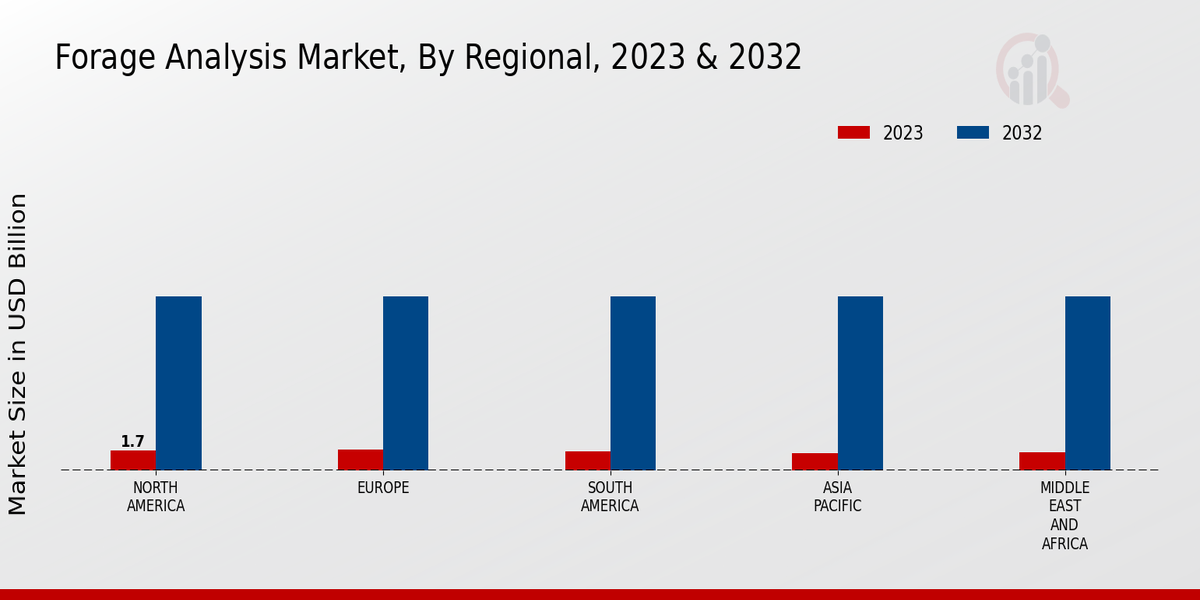Government Initiatives and Support
Government policies and initiatives significantly influence the Global Forage Analysis Market Industry, as many countries implement programs to support agricultural innovation and sustainability. Subsidies for forage testing and analysis services encourage farmers to adopt advanced practices, leading to improved livestock productivity and resource management. Additionally, governments are increasingly recognizing the importance of forage quality in ensuring food security and promoting rural development. These initiatives not only enhance the accessibility of forage analysis but also foster collaboration between research institutions and farmers. As a result, the market is likely to benefit from increased funding and resources aimed at advancing forage analysis capabilities.
Rising Demand for Livestock Products
The Global Forage Analysis Market Industry experiences a notable surge in demand for livestock products, driven by the increasing global population and changing dietary preferences. As consumers shift towards protein-rich diets, the need for high-quality forage becomes paramount. This trend is reflected in the projected market value, which is expected to reach 9.22 USD Billion in 2024. Farmers are increasingly relying on forage analysis to optimize their livestock feed, ensuring better health and productivity. The emphasis on sustainable livestock farming practices further propels the demand for precise forage analysis, as it aids in improving feed efficiency and reducing environmental impacts.
Global Trade Dynamics and Market Expansion
The Global Forage Analysis Market Industry is influenced by the dynamics of global trade, as countries engage in the exchange of agricultural products and technologies. The growing interconnectedness of markets facilitates the sharing of best practices and innovations in forage analysis. As nations seek to enhance their agricultural productivity, the demand for high-quality forage testing services is likely to expand. This trend is particularly evident in emerging economies, where the need for improved livestock management practices is becoming increasingly recognized. The expansion of international trade agreements may further bolster the market, providing opportunities for growth and collaboration across borders.
Increasing Focus on Sustainable Agriculture
Sustainability is a driving force in the Global Forage Analysis Market Industry, as agricultural practices evolve to meet environmental challenges. Farmers are increasingly adopting sustainable forage management practices to enhance soil health and reduce carbon footprints. Forage analysis aids in identifying the most suitable species and management practices that align with sustainability goals. This shift not only supports environmental stewardship but also enhances the economic viability of farming operations. As global awareness of climate change intensifies, the demand for sustainable forage solutions is expected to rise, further propelling the market's growth trajectory towards an anticipated value of 19.6 USD Billion by 2035.
Technological Advancements in Forage Testing
Technological innovations play a crucial role in the Global Forage Analysis Market Industry, enhancing the accuracy and efficiency of forage testing methods. Advanced analytical techniques, such as near-infrared reflectance spectroscopy (NIRS) and molecular diagnostics, facilitate rapid assessment of forage quality. These technologies not only reduce the time required for analysis but also provide more reliable data for farmers and agronomists. As the market evolves, the integration of digital platforms for data management and analysis is becoming increasingly prevalent. This trend is likely to contribute to the market's growth, with projections indicating a compound annual growth rate of 7.11% from 2025 to 2035.























Leave a Comment